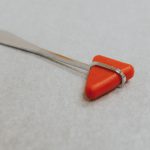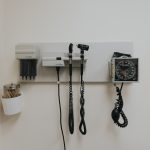Under Review: No
Issued by Council: Jan. 1, 2010 (Reprocessing Medical Equipment)
Reissued by Council: Nov. 1, 2022 (Infection Prevention and Control)
PREAMBLE
Regulated members are expected to ensure and promote effective infection prevention and control (IPAC) policies, systems and practices.
Infection prevention and control is a multi-faceted approach that includes, but is not limited to, hand hygiene, point-of-care risk assessments, environmental cleaning and disinfection, and reprocessing of reusable medical devices.
This standard sets out the specific requirements regulated members must adhere to in order to prevent the potential spread of infection between themselves, patients and staff in clinical settings.
Additional information, general advice and/or best practices can be found in the companion resources listed below.
STANDARD
- A regulated member practising in a community medical clinic1 must practise in accordance with the Infection Prevention & Control Requirements for Medical Clinics.
- In situations where a location offers both community medical care and accredited services, a regulated member must ensure all requirements related to infection prevention and control are followed accordingly.
- A regulated member who practises in a community medical clinic1 and uses reprocessed, reusable medical devices must ensure procedures for the cleaning, disinfecting and sterilizing of those devices comply with the Reusable and Single-Use Medical Device Requirements for Medical Clinics.
- A regulated member who practises in a community medical clinic1 and uses single-use medical devices must follow Part A of the Reusable and Single-Use Medical Device Requirements for Medical Clinics.
- A regulated member must ensure ongoing quality assurance through monitoring practices and changing practice accordingly.
- A regulated member must fully cooperate with any IPAC-related practice visit or inspection, in accordance with the Health Professions Act2, including:
- allowing assessors to enter and assess the premises;
- allowing assessors access to examine all activities, equipment, policies and/or procedures, records, correspondence and other documents or electronic data related to IPAC, and to make copies; and
- providing all information requested by the assessor, including answering the assessor’s questions.
______________________
1“Community medical clinics” include any location where a regulated member provides professional services, which is not a hospital or an accredited medical facility as defined under section 8 of Schedule 21 of the HPA.
2Health Professions Act, Part 3.0: Continuing Competence and Practice Visits, and Part 3.1: Inspectors.
Other helpful CPSA resources
All ResourcesInfection Prevention & Control Requirements for Medical Clinics
CPSA Click to view filesReusable Requirements for Medical Devices
CPSA Click to view filesSelf-Assessment Tool: Reusable & Single-Use Medical Device Requirements for Medical Clinics
CPSA Click to view filesSelf-Assessment Tool: Infection Prevention and Control Requirements for Medical Clinics
CPSA Click to view filesGuidance for Medical Clinics: Reusable and Single-Use Medical Device Requirements
CPSA Click to view filesAccreditation: Non-Hospital Surgical Facilities
CPSA Click to view filesOffsite Reprocessing of Medical Devices
CPSA Click to view filesSelf-Assessment Tool Offsite Reprocessing of Medical Devices
CPSA Click to view filesAbout the Standards of Practice
The CPSA Standards of Practice are the minimum standards of professional behaviour and ethical conduct expected of all physicians registered in Alberta. Standards of practice are enforceable under the Health Professions Act and will be referenced in the management of complaints and in discipline hearings.
Questions?
For questions or archived standards, policies and guidelines contact our Standards of Practice Advisor.






















